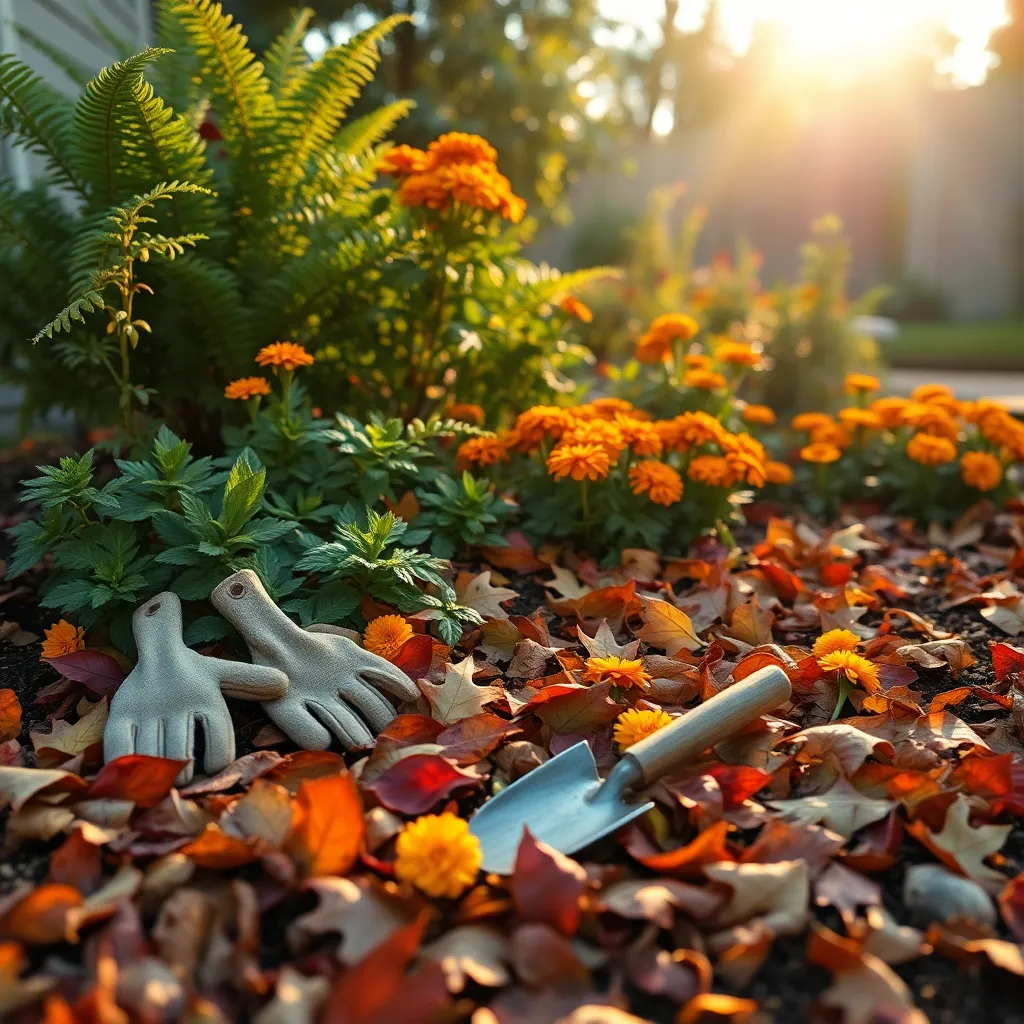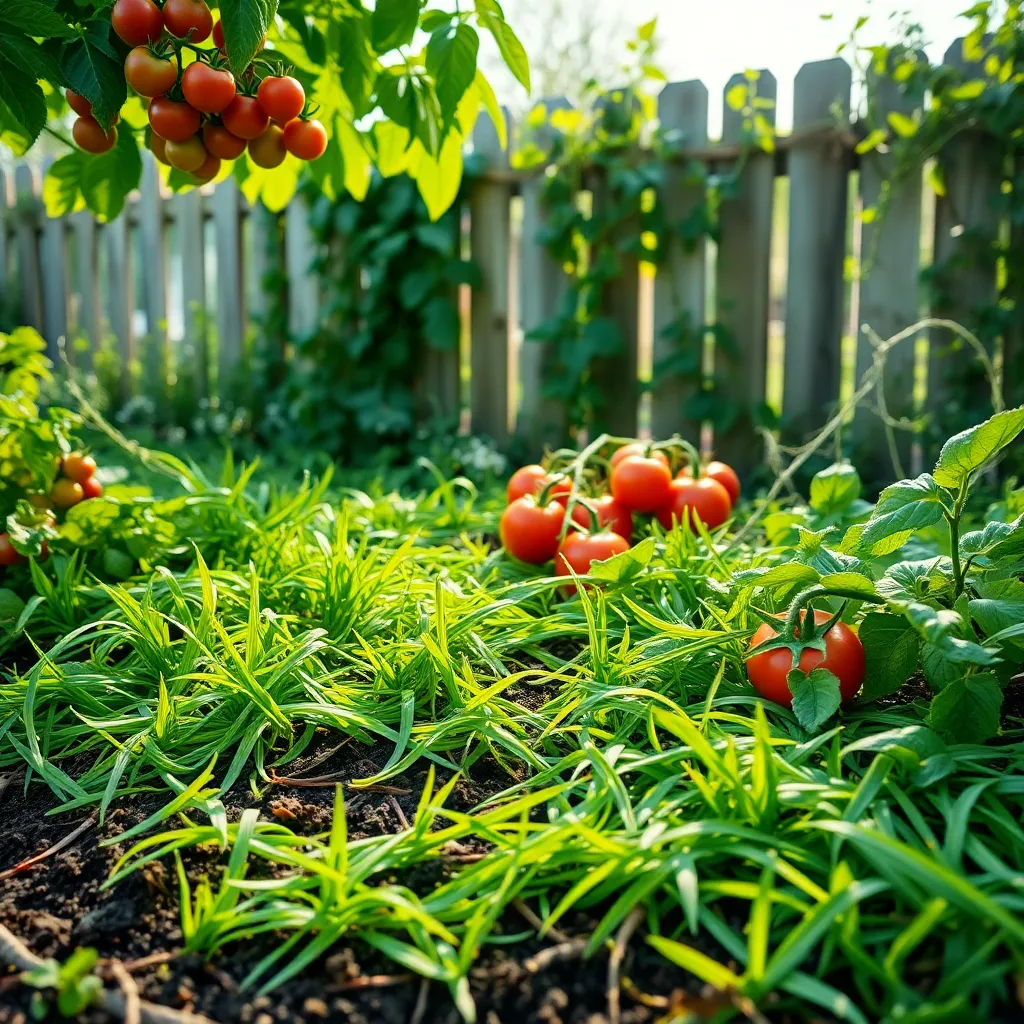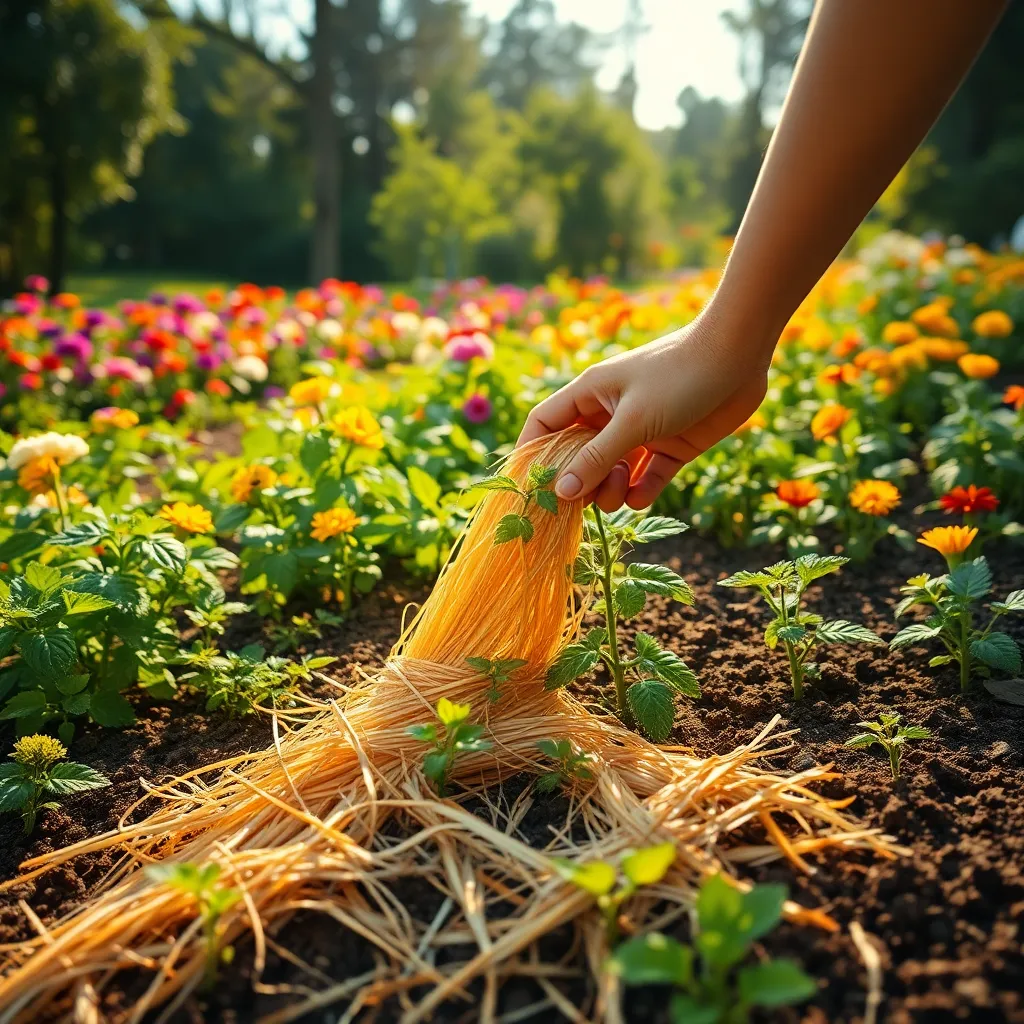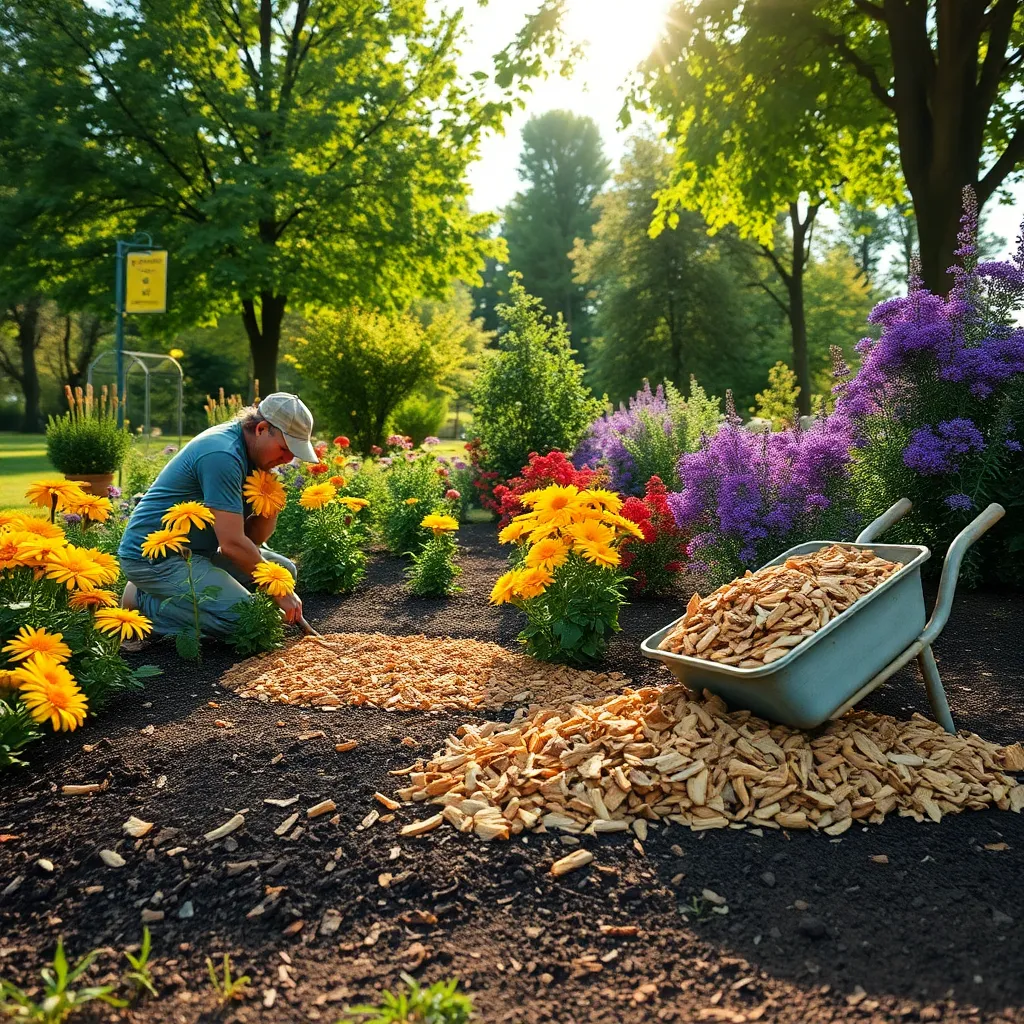In the vibrant world of gardening, mulching stands as one of the simplest yet most transformative techniques you can employ to nurture your plants and soil. Whether you’re just starting with your first garden bed or are a seasoned green thumb, understanding the art of natural mulching can elevate your garden’s health and productivity to new heights. By embracing mulching, gardeners can enjoy richer soil, healthier plants, and fewer weeds, all while contributing to a more sustainable ecosystem.
Natural mulching is more than just a protective blanket for your soil; it’s a dynamic process that enriches and supports your garden’s vitality. This article will guide you through a variety of mulching materials, from common favorites like straw and wood chips to innovative options that might surprise you. Armed with these practical insights, you’ll be equipped to choose the best mulching techniques suited to your garden’s unique needs, enhancing its resilience and beauty.
For those who have already dabbled in mulching, this guide offers fresh perspectives that can refine your approach and yield even better results. We’ll explore the timing and application of different mulches, ensuring your plants receive optimal benefits throughout the growing season. So, whether you’re looking to conserve moisture, improve soil health, or simply reduce garden maintenance, our exploration of natural mulching techniques promises to be both enlightening and rewarding.
Use Fallen Leaves as Mulch

Fallen leaves are a fantastic natural resource that can be used as mulch to enrich your garden soil. They provide an excellent way to recycle organic matter, enhancing the soil’s fertility and structure over time.
Begin by collecting leaves from your yard, ensuring they are free from disease or pests. It’s important to shred the leaves before using them as mulch; you can do this with a lawn mower or a leaf shredder.
When applying leaf mulch, spread a layer about two to three inches thick around your plants, keeping it a few inches away from the stems to prevent rot. This mulch layer will help retain soil moisture, suppress weeds, and gradually add nutrients as it decomposes.
For more experienced gardeners, consider mixing shredded leaves into your compost pile to speed up decomposition. The combination of green and brown materials in compost will result in nutrient-rich humus that can be added back to your garden.
Layer Grass Clippings for Moisture

Grass clippings are an excellent natural mulch that can help retain moisture in your garden soil. When applied correctly, they create a barrier that minimizes evaporation and keeps the soil cool during hot weather. Begin by collecting fresh clippings from your lawn, ensuring they are free of chemicals such as herbicides or pesticides. It’s important to let the clippings dry for a day or two before using them to prevent matting, which can restrict airflow to the soil.
Once dried, spread the clippings in a thin layer—about 1 to 2 inches thick—around your plants. This thickness is ideal because it allows water to penetrate while still providing adequate coverage to suppress weeds. For those with more experience, consider mixing grass clippings with other organic materials like shredded leaves or straw. This combination can enhance the mulch’s effectiveness by adding more nutrients and improving soil structure over time.
Be mindful of the type of grass you use, as some may contain seeds that could germinate in your garden. If this is a concern, opt for clippings from seedless lawn varieties or those that have been mowed before seeding. Water your garden well before applying grass clippings to ensure that the soil is sufficiently moist, as this mulch is most effective when the soil is already hydrated. In dry climates, you might need to water more frequently, but always check soil moisture levels before watering.
Finally, it’s a good idea to monitor the mulch layer regularly and replenish it as necessary. As the grass clippings decompose, they enrich the soil with nitrogen, which is particularly beneficial for vegetable gardens. Remember to turn the mulch gently with a rake or garden fork every few weeks to maintain good air circulation and prevent compaction. With these simple steps, you’ll create a thriving garden environment that conserves water and promotes healthy plant growth.
Apply Straw to Suppress Weeds

Applying straw as mulch is an effective way to suppress weeds in your garden, offering both simplicity and affordability. Choose clean, seed-free straw to ensure you’re not inadvertently introducing new weed seeds into your garden bed.
Spread a layer of straw about 2-3 inches deep around your plants, making sure not to pile it up against the stems. This thickness is sufficient to block sunlight, which effectively discourages weed growth, while still allowing water to penetrate the soil.
Besides suppressing weeds, straw mulch helps maintain soil moisture, reducing the need for frequent watering. This is especially beneficial during warmer months, as it keeps the soil cooler and prevents it from drying out quickly.
For those looking to add nutrients to their garden, straw gradually breaks down and enriches the soil over time. Turn the straw into the soil at the end of the growing season to enhance soil fertility and improve structure for next year’s planting.
Incorporate Pine Needles for Acidity

Pine needles can be an excellent natural mulch for gardeners looking to increase soil acidity. They break down slowly, providing long-term benefits and are particularly beneficial for acid-loving plants like azaleas, rhododendrons, and blueberries.
Start by spreading a layer of pine needles about 2 to 3 inches thick around the base of your plants, keeping the mulch a few inches away from stems to prevent rot. This depth not only helps in retaining moisture but also prevents weed growth effectively.
As pine needles decompose, they gradually lower the pH of the soil, making it more acidic. It’s crucial to monitor soil pH regularly to ensure it remains within the optimal range for your specific plants.
For gardeners dealing with compacted soil, pine needles can improve aeration thanks to their loose, airy structure. Additionally, they enhance soil drainage, making them a great choice for areas prone to waterlogging.
Spread Wood Chips for Insulation

Wood chips are an excellent natural mulching material that provides effective insulation for your garden. By spreading a layer of wood chips around your plants, you can help regulate soil temperature, keeping roots cool in the summer and warm in the winter.
To apply wood chips effectively, ensure you spread a layer about 2 to 4 inches thick across your garden beds. This depth is sufficient to suppress weeds while maintaining moisture levels, reducing the need for frequent watering.
For beginners, it’s crucial to ensure that the wood chips do not touch the plant stems directly, as this can lead to rot. Leave a small gap around each plant base to prevent moisture from accumulating against the stems.
Experienced gardeners can benefit from knowing that different types of wood chip mulch decompose at varying rates. Hardwoods, like oak, break down slower than softwoods, such as pine, offering longer-lasting insulation and nutrient release.
Consider the source of your wood chips as well, selecting untreated and chemical-free options to avoid introducing toxins to your soil. Local arborists or garden centers often provide affordable and sustainable sources of wood chip mulch.
Conclusion: Growing Success with These Plants
In exploring ‘Natural Mulching Techniques For Gardens,’ we’ve uncovered five key relationship concepts: nurturing the soil of communication, layering trust like mulch for growth, maintaining boundaries to protect roots, allowing time for the natural decomposition of past grievances, and fostering an environment of mutual support and nourishment. These principles mirror the fundamentals of a thriving relationship, where nurturing, trust, boundaries, healing, and support are paramount.
As an immediate next step, why not choose one of these concepts to focus on today? Perhaps have a heartfelt conversation with your partner, or take a moment to appreciate the trust you’ve built together. Small, intentional actions can cultivate a flourishing relationship garden.
Remember, relationships, like gardens, require ongoing care and attention. Save or bookmark this article to revisit these nurturing techniques and allow them to inspire continuous growth in your relationship journey.
Looking ahead, embracing these principles can lead to a vibrant and resilient partnership. With each step you take, you’re sowing seeds for a future of enduring love and connection. Keep nurturing, and watch your relationship bloom.

